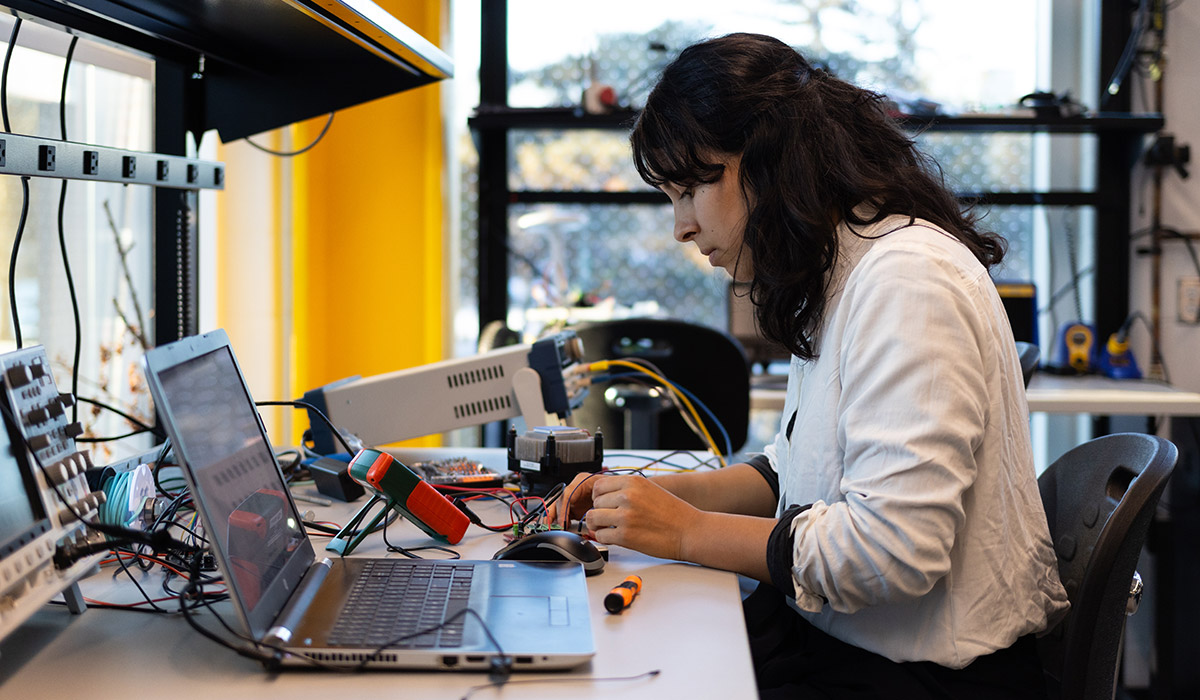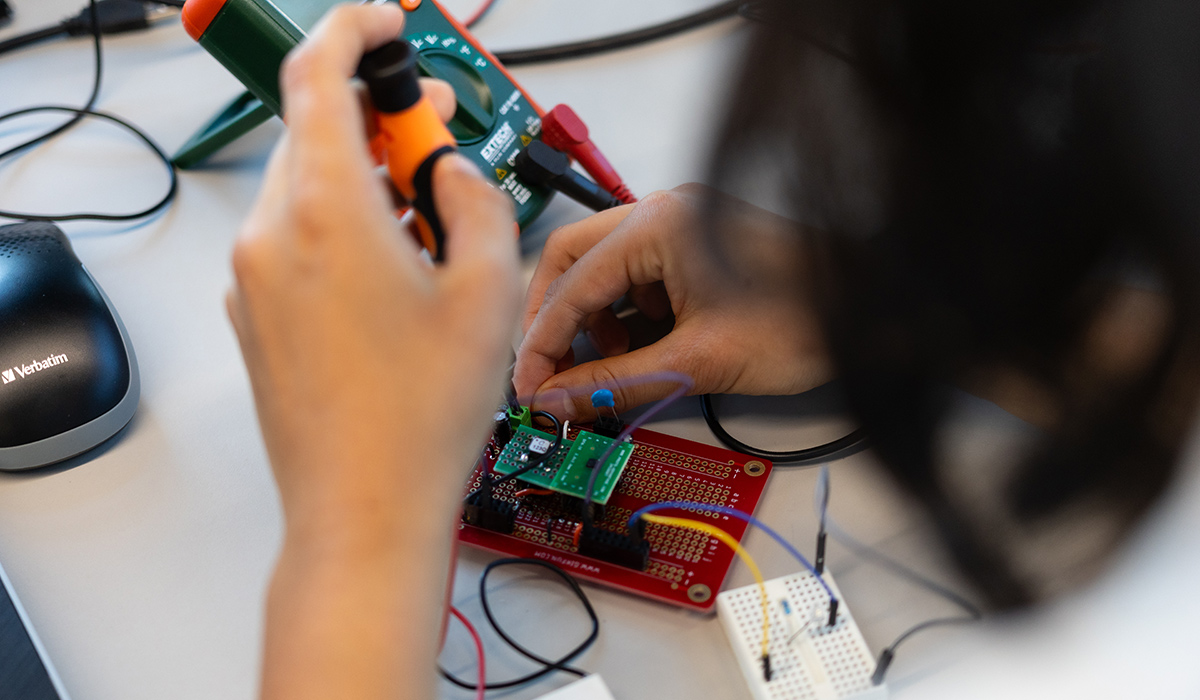Prolonged darkness is a reality for residents in Canada’s north. In winter, regions like the Yukon average only four hours of sunlight per day. This lack of light creates challenges for the region’s First Nations communities as limited visibility hampers traditional practices like hunting and trapping, as well as everyday activities like walking dogs and running errands.
In 2023, Sofia Parra, an industrial design student from Carleton University came up with a creative and sustainable solution: the Hesper, a self-powered coat that generates light from body heat.
“The garment is powered from body heat and the cold,” explains Parra, who has since graduated Carleton.
“It uses this little thing called a Peltier device — a small, flat square — and absorbs the outdoor cold on one side and the body’s warmth on the other. This temperature difference is what generates the electricity.”
The Hesper’s lightweight circuit is made of stainless-steel conductive thread and is sewn into a removable inner jacket. When activated, the thermoelectric modules light up the LED lights that illuminate the coat. The wearer can adjust the brightness using a subtle rotating dial in the collar.
“I wanted to create something self-sustaining,” Parra says.
Finding Bright Solutions to Community Challenges
The idea for the Hesper first took shape when Parra visited the Yukon as part of an ongoing research and educational partnership between the Carleton and the Na-Cho Nyäk Dun First Nation. In speaking with several locals, Parra learned about the issues they faced due to the lack of sunlight.
“There are very few streetlights in my neighbourhood,” explains Nikki Hutton, a member of the crow clan in the Yukon and a community service worker with the Na-Cho Nyäk Dun Development Corporation.
“If you want to take your dog for a walk, it’s pitch black until you get to the highway – which is a 20-to-30-minute walk.”
Hutton is part of the Yukon University Makerspace that collaborated with Parra on her self-powered coat project.

“Safety is a big concern as well, especially for little kids. Having reflectors only does so much – if they turn the wrong way with no light to reflect on them, it’s dangerous,” Hutton says.
Parra worked directly with the Na-Cho Nyäk Dun community when crafting the jacket. This cross-country collaboration was facilitated by Carleton-designed hologram technologies which allowed her to communicate with her partners in the North before physically travelling to Mayo to work with them.
“The First Nations people were extremely welcoming,” Parra says. “It was really beautiful to see everyone working together and pitching in, in whatever way they could.”
The Self-Powered Coat: Weaving Together Tradition and Technology
Parra integrated elements of Na-Cho Nyäk Dun cultural identity into the Hesper’s design. The layered construction, colours and trim all nod to the community’s heritage. Her idea for the coat’s aesthetic was inspired by a constellation Hesperides, often seen up North, it is home to the morning and evening stars. This gave rise to its official name: the Hesper.
Beyond its design, elements of the coat’s construction are influenced by centuries of survival. The scoop design in the back and front accommodates ease of movement, be it walking, climbing, or sitting on a snowmobile. The cuffs and high neck shield, as well as the vent flap in the back, provide protection from the cold weather and blowing snow.

“The creation of the Hesper wouldn’t be possible without the tireless efforts of the community,” Parra says.
Parra’s contributions to the creation of the Hesper speaks to the importance of incorporating traditional knowledges into modern innovations and respecting the legacy of those who have thrived in the North for generations.
“I call it fusion,” says Hutton, who worked hands-on with Parra to create the Hesper. “Projects like this help bridge the generational gap that exists in First Nations communities, while also giving us the opportunity to be part of the technological movement that is rapidly changing our world.”
For Parra, the Hesper represents more than just a design achievement, but also emerges as an economic opportunity for the women in the First Nations Makerspace program. The potential to manufacture and sell these jackets locally and internationally could provide a self-reliant source of income, empowering the Na-Cho Nyäk Dun to share their culture and values with the world through a garment that is both a symbol and a tool. With that in mind, Parra is hoping to have the coat’s unique design patented soon.
“I am just one person, one designer,” Parra says.
“With further collaboration I hope that this technology will one day help improve the lives of people who aren’t afforded the luxury of a well-lit environment.”
